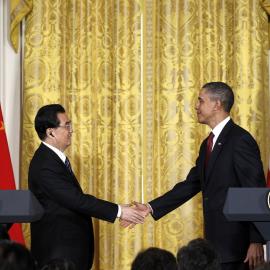To the Editor:
Like most critics of the idea of a G-2 made up of the United States and China, an idea that I initiated in my book The United States and the World Economy, published in 2005, and was publicized most widely in these pages ("A Partnership of Equals," July/August 2008), Elizabeth Economy and Adam Segal ("The G-2 Mirage," May/June 2009) misunderstand the basic concept.
The proposed G-2 was never intended to supplant any of the existing international economic steering committees, of which the G-20 has now attained preeminence, let alone the long-standing multilateral organizations, such as the International Monetary Fund and the World Trade Organization. To the contrary, its chief purpose is to supplement the existing institutions and make them work better by promoting prior agreement between the two countries whose cooperation has become a sine qua non for making progress on virtually any international economic issue. It would simply be a caucus of the two rather than any attempt to create a new governing entity, let alone a "dominant condominium," as mischaracterized by some.
The United States and China are the world's two most important economies. The United States leads the high-income economies, and China leads the emerging-market economies. Each of these groups now accounts for half of global output. The United States and China are the two largest trading countries and the two largest polluters.
There will be no sustained recovery from the current global economic crisis unless the United States and China lead it. There will be no renewed momentum toward progress on global trade, through the Doha Round or otherwise, unless they endorse it. There will be no international compact on global warming unless they embrace it. The United States is the world's largest largest deficit/debtor country, and China is the world's largest surplus/creditor country -- and there will be no resolution of the global imbalances that helped bring on the current crisis, nor lasting reform of the international financial architecture, without their concurrence.
Hence, an effective G-2 is imperative if the world economy is to move forward both cyclically and structurally. Of course, it must be kept informal and indeed unremarked on by the two countries themselves. Of course, the European countries, Japan, and some other countries must participate in the multilateral agreements that are required on virtually all issues. Of course, the linkages between the G-2 and other institutions must be handled with diplomatic skill. But the substance of the issues that these institutions address will not be advanced unless the United States and China work it out together. Chinese Premier Wen Jiabao, in fact, recently assured the Europeans that the United States and China had no intention of trying to manage the world on their own and that instead the development of close U.S.-Chinese relations would benefit other countries.
Economy and Segal would move in precisely the opposite direction by suggesting that the United States "sit down with Japan, the EU, and other key allies to begin coordinating their policies toward China." This would be viewed by the Chinese as an effort to surround and even isolate them. It would be hugely counterproductive and would surely fail, not least because none of those U.S. allies would be willing to play (and correctly so).
I am delighted that such foreign policy and security experts as Zbigniew Brzezinski and Niall Ferguson have recently advocated that the G-2 concept be expanded well beyond the economic domain for which I originally proposed it. The Hu Jintao and Obama governments also seem to be moving in this direction, building on former Deputy Secretary of State Robert Zoellick's Senior Dialogue and former Secretary of the Treasury Henry Paulson's Strategic Economic Dialogue. Economy and Segal in fact conclude by proposing "one overarching negotiation that sits above or outside the purview of the U.S. government's traditional cabinet-level agencies" and by arguing that "the National Security Council and the vice president's office would ideally play a central role in this effort," which is pretty close to the annual summits that I have recommended to both establish the G-2 and make sure that it works effectively.
C. FRED BERGSTEN
Director, Peterson Institute for International Economics
